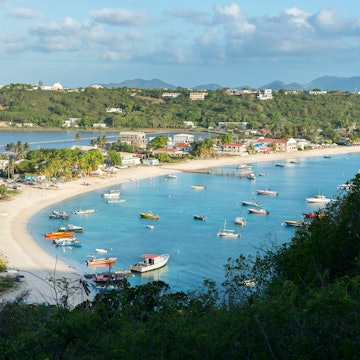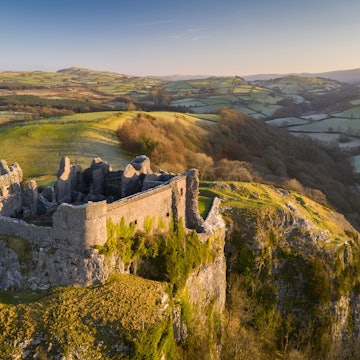

Strolling on the pier in Brighton is a key part of the seaside experience. Philip Bird LRPS CPAGB/Shutterstock
There’s something special about the seaside in England. It might be the cheerful, chintzy charm of a bracing stroll along a pier, or a sun-sizzled walk along the seafront. It might be the candy-colored beach huts, sand castles and Punch and Judy shows. Maybe it's the party atmosphere, or the cheeky seagulls that patrol the shoreline in search of unattended fish and chips...
In fact, there are many different English seasides. There’s the "kiss-me-quick" nostalgia of Brighton, with its boisterous nightlife, Victorian pier and pebble-edged prom. There’s surfer-thronged Fistral Beach in Cornwall, and genteel Southwold in Suffolk, where satirically themed automata stand in for gambling machines on the pier.
What the English seaside serves up in abundance is atmosphere. The chance to step back to an earlier time away from the stresses of modern life is part of the reason millions of holidaymakers love it. Here’s how you can get the best from the English seaside.

What’s the history of the England’s seaside resorts?
The first recognized seaside resort in England was Scarborough in North Yorkshire, which started advertising its merits as a destination for health retreats in the 17th century. In the 1780s, local entrepreneurs introduced pioneering bathing machines, allowing women to modestly enter the water (a big etiquette issue at the time).
By the mid-Georgian period (1714–1830), going to the seaside for the summer holidays was firmly established in the English psyche. In Victorian times, the expanding rail network put weekends by the sea within reach of the masses, leading to a proliferation of cast-iron piers and garden-lined promenades in towns such as Brighton and Weymouth.
By the 1900s, whole industrial cities were decamping en masse every summer to resorts such as Blackpool and Great Yarmouth. However, with the explosion of discount airlines and cheaper holidays abroad at the end of the 20th century, many of England's seaside resorts went into a steady decline.
Fast forward to the 2020s and a fresh injection of vim, with artists and foodies setting up new businesses in seaside hubs such as Folkestone and Margate, has been bringing holidaymakers back.
When should I visit the seaside in England?
That depends on the kind of experience you are looking for. If you don’t mind sharing the sand and shingle with a crowd, and enjoy the vibrant buzz of busy beach days, pick a weekend in summer from June to September. Bank holiday weekends in spring can be almost as busy.
As the weather cools from fall to winter (October to December), visitor numbers slow to a trickle, but the English seaside has a gentle melancholy in the off-season that’s particularly reviving, as murmurations of starlings swirl around the piers and big waves crash against the seafront. If you come by car, you'll have somewhere warm to retreat with your fish and chips.
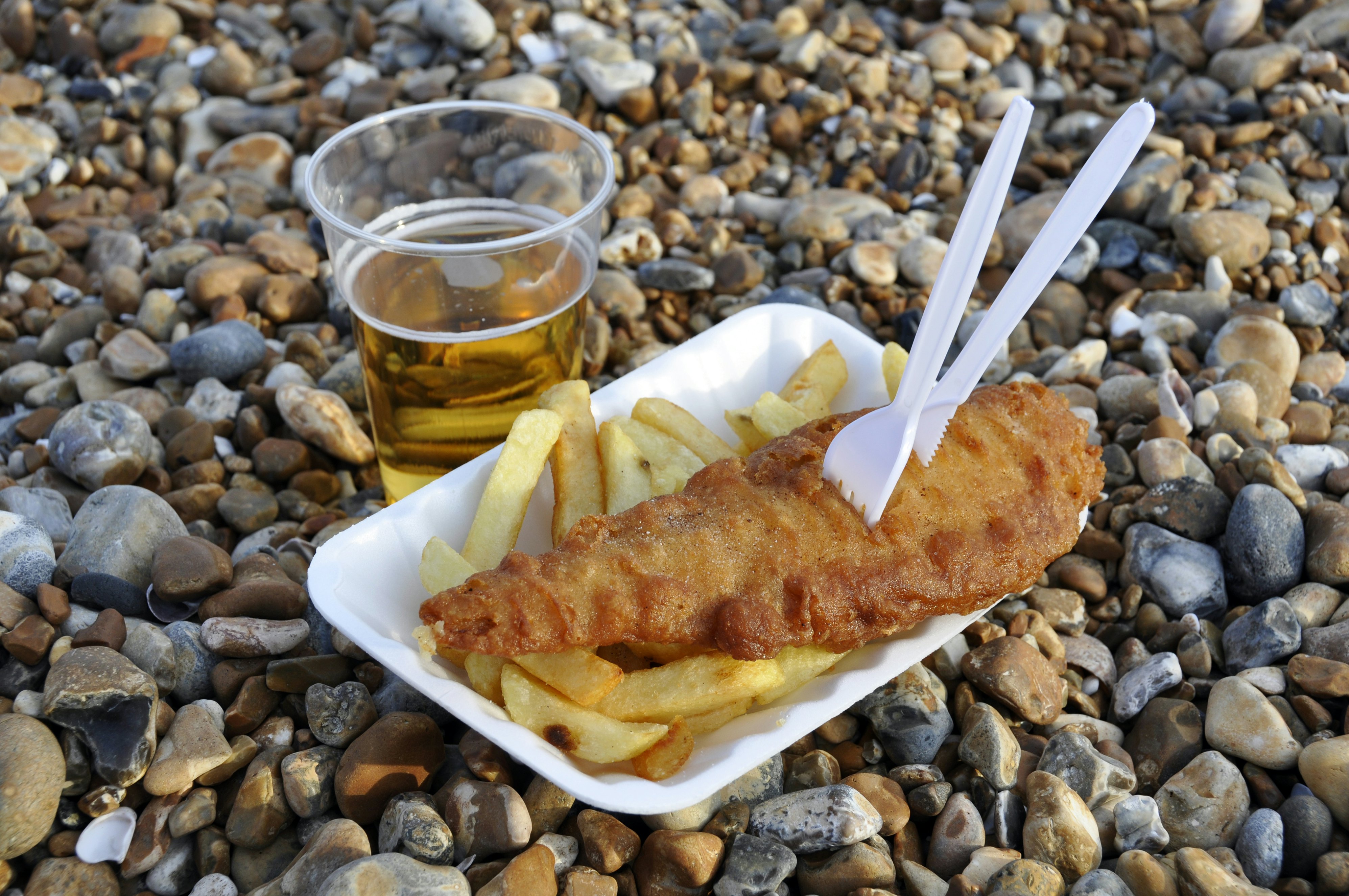
What should I eat and drink on a trip to the English seaside?
Seafood, obviously! Beyond the ubiquitous fish and chips – a dish imported by Jewish migrants in the 19th century – you’ll find stands serving oysters, pickled cockles, prawns and other shellfish, and restaurants preparing gourmet dishes using the bounty of the English Channel and Atlantic. Vegans take note: in Brighton you can get your fish and chips at No Catch, where seaweed adds the requisite salty flavors.
For dessert, it’s ice cream all the way, from delicious creamy local cones in Devon and Cornwall to premium gelato served by Italians who relocated to the Kent coast.
Don’t miss the chance to try to buy some classic English seaside rock – a tooth-achingly sweet candy that comes in novelty shapes or baton-like sticks with messages running right the way through.
Where should I stay at the English seaside?
Most seaside resort towns have at least one landmark hotel on the seafront – typically a grand Victorian or Edwardian property such as Brighton’s Grand Hotel, Bournemouth’s Highcliff or Morecambe Bay’s Midland Hotel. If you can’t afford premium rates, cheaper hotels and B&Bs of all classes abound, though it pays to check on a map to see how far you are from the sand.
More recently, Airbnb has revolutionized seaside accommodation, with inexpensive self-catering flats and even whole houses that are perfect for families and groups of friends. Be aware, however, that there’s a fair bit of a backlash in some areas of the country, particularly Cornwall, where local people are being priced out of renting or buying homes.
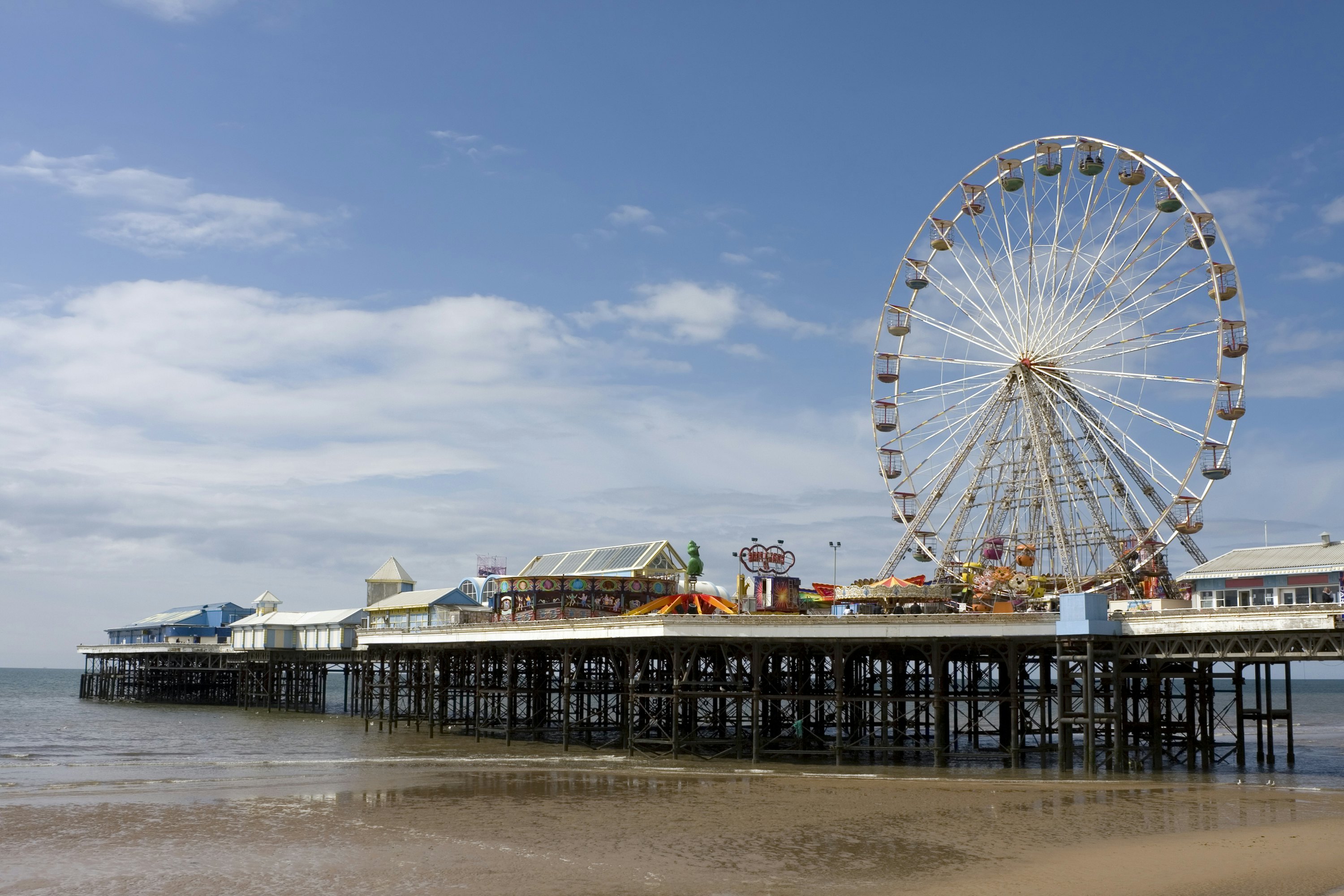
What are the top experiences at the English seaside?
Here are the best English seaside experiences, and where to enjoy them.
Take a stroll along the pier
The first seaside piers popped up in Georgian times, but it was the Victorians who elevated the pier to an art form. At Brighton’s landmark Palace Pier, open since 1899, the screams of thrill-seekers compete with the clanking of gambling machines and the crashing of waves. You can stroll past doughnut stands and bars to a pier-end viewing platform for sweeping views of the seafront.
Other memorable resorts with piers include Southend – where a railway runs along the longest pier in the country – and Southwold, whose fascinating Under the Pier show features curious and satirical coin-operated machines created by Tim Hunkin, former props-maker for the band Pink Floyd. If you want a choice of piers, try Blackpool – the town has three amusement-crammed piers, dating from the 1860s to the 1890s.
Munch on England’s best fish and ships
While fish and chips is an import to the British Isles, locals have claimed it as their own, expanding beyond the default battered cod and haddock to premium versions with plaice, skate and rock salmon, or even lobster tails. The ideal batter is beer-based; a diminishing handful of veteran chip shops still fry in lard for that extra crunch.
Where can you find the best fish and chips? Try fishing beaches where the catch comes fresh off the boats, such as Aldeburgh in Suffolk, or chip shops feted by the National Fish & Chip Awards, such as Whitehead's Fish & Chips in Hornsea, East Yorkshire, or French’s Fish Shop in Wells-next-the-Sea.
For the posh version, head to foodie seaside havens such as Padstow in Cornwall, where celeb chef Rick Stein launched his famous Seafood Restaurant in 1975 (you can try the Stein take on fish and chips at Stein’s Fish & Chips). Michelin-starred Paul Ainsworth at No 6 is another Padstow seafood star.

Go to the fair
Forget the so-called “amusement arcades” full of gambling machines – the best way to keep entertained by the English seaside is at the fair. Brighton has thrill rides right on Palace Pier, while Southend has Adventure Island, and Margate has Dreamland, where funfair rides are accompanied by concerts from top rock and pop talent.
Heading north, Blackpool’s Pleasure Beach is the granddaddy of seaside amusement parks, zooming roller coasters and drop rides clattering and rattling behind the seafront (also check out the giant Ferris wheel on Central Pier). There’s a smaller Pleasure Beach at Great Yarmouth and Bottons Pleasure Beach enlivens the sands at Skegness in Lincolnshire.
Walk along the “prom”
For the definitive seafront promenade, head to Blackpool. The illuminated Blackpool Tower is the Eiffel-Tower-like center point for 7 miles (11.3km) of beaches, parks, bars, pubs and amusement arcades. Come for the famous Illuminations from September to January, when the entire seafront becomes an enormous light show. Southport near Liverpool is another big-name prom, with the added bonus of England’s second-longest pier. Or try Worthing in East Sussex, with its 5-mile (8km) waterfront walk laid out in the 1860s.
If you’d rather walk right next to the water, Chesil Beach in Dorset is England’s longest beach, spanning 18 miles (29km) of sand and shingle. Beachfront walkers also rate Bournemouth’s chain of sandy beaches and the blissful dunes of Camber Sands on the East Sussex coast.
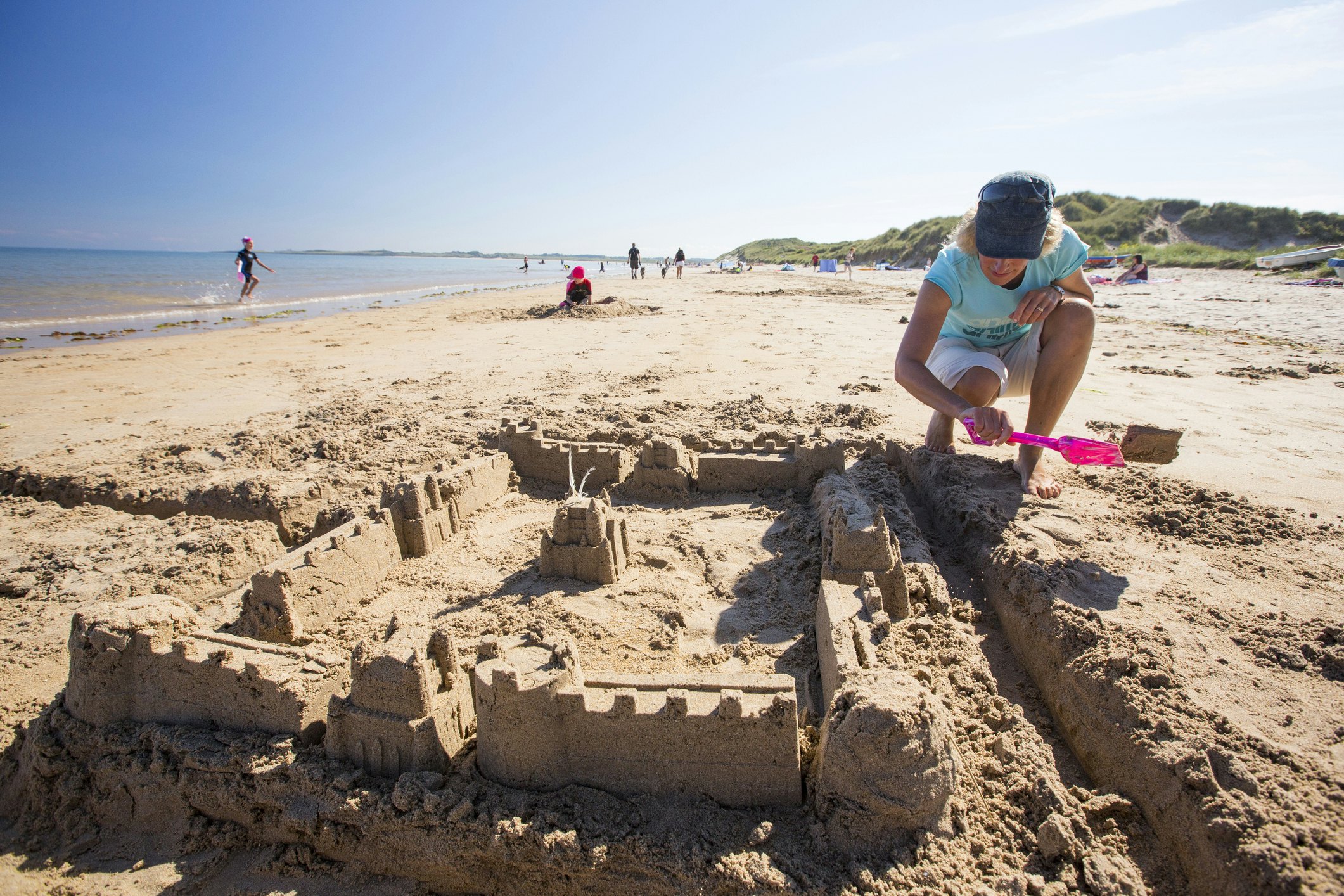
Build a sand castle
There are many contenders for the title of England’s best beach, but for our money, the perfect strand comes with fine sand for castle building, not-too-enormous crowds, shallow waters for toddlers to paddle in, and a hint of 1950s nostalgia. Norfolk’s Wells-next-the-Sea is a good starting point, with pastel-colored beach huts on stilts backing a pristine sweep of sand.
The South West tops many best beach polls, thanks to gorgeous castle-worthy sands such as pretty Bantham Beach and Woolacombe and Putsborough Sands in Devon, where twin beaches merge into a 3-mile (4.8km) spray of golden sand. Or head over to Cornwall, where the sands are powder-fine at Porthcurno, Sennen Cove, Pedn Vounder and Polzeath.
Beach resorts such as Weymouth, Folkestone and Weston-super-Mare go one step further, with ambitiously creative sand sculpture competitions.
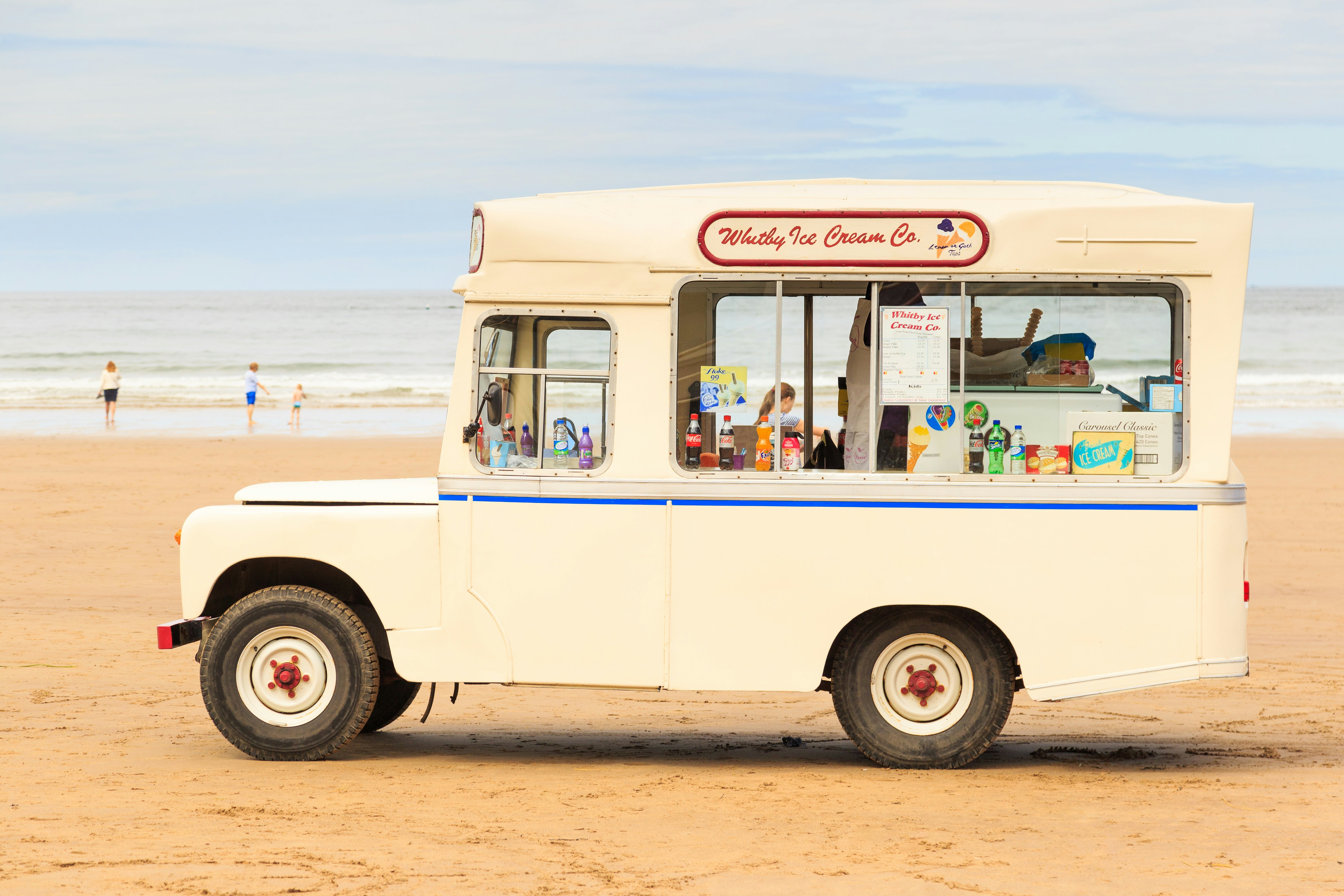
Sample England’s creamiest ice cream
Nothing goes with sun-baked golden sand quite like frosty ice cream, and proper hand-made English ices are having a renaissance, though you’ll still find plenty of the machine-made, whippy variety. In Devon, seek out the vans serving Hocking’s Dairy Cream Ices around Bideford, Ilfracombe and Appledore.
Another good place to experience Devon’s dreamy, creamy ices is Salcombe, care of the Salcombe Dairy. Across the border in Cornwall, much-loved Roskilly’s on the Lizard Peninsula has seaside outlets serving its delicious ice cream in locations such as Padstow and Falmouth. Up north, head to Whitby to buy from vans on the beach, or slurp at Clara’s, award-winning Trillo’s, and neon-lit Daisy Bailey’s.
An inside tip – some of the best Italian gelato on the English seaside can be found in Broadstairs in Kent. As well as being Charles Dickens’ favorite holiday destination, the perfect crescent of sand at Viking Bay is backed by the wonderful Morelli’s up on the clifftop.
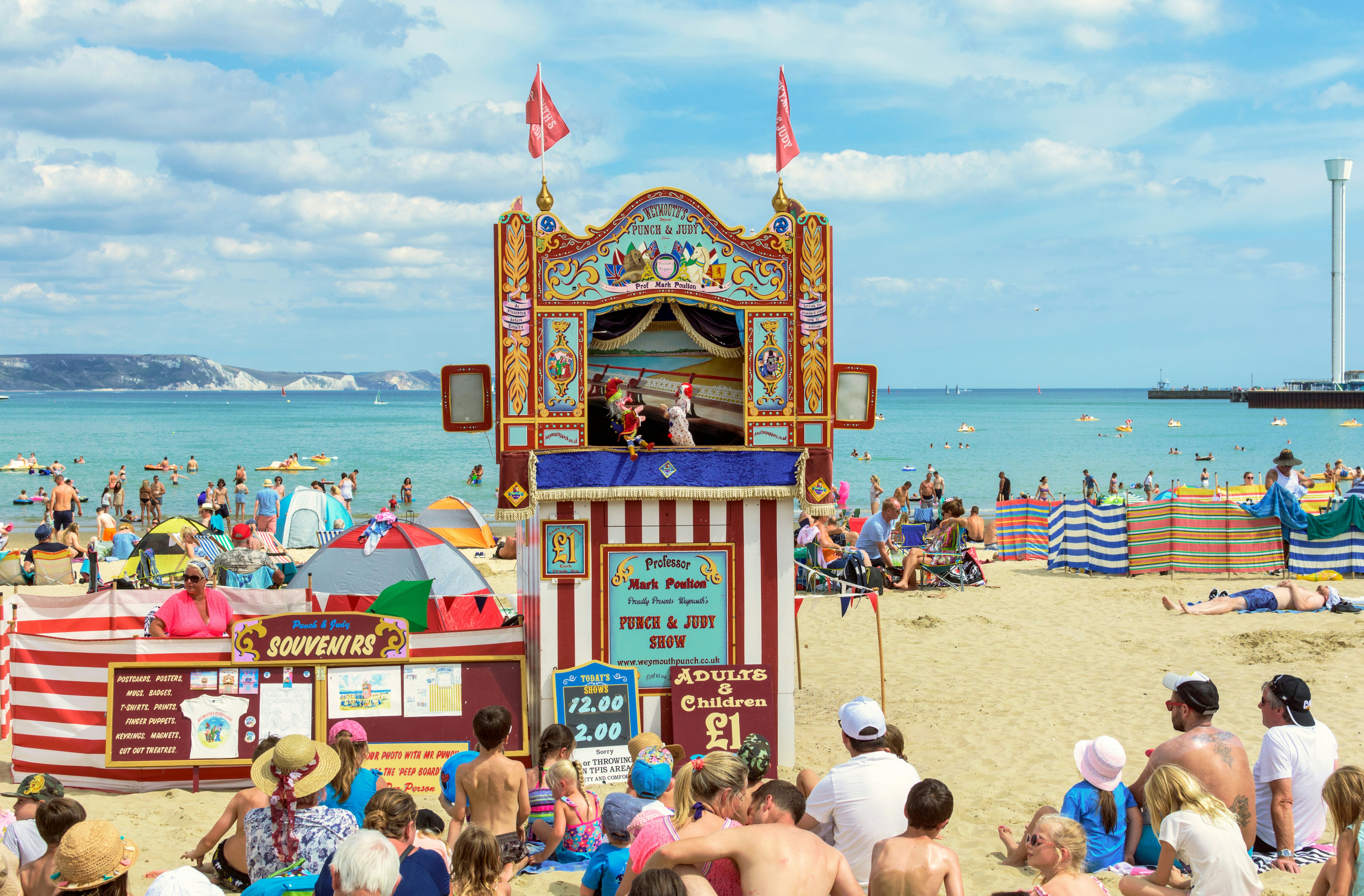
See a Punch and Judy show
Vividly colorful, cartoonishly violent, and riffing on Punchinello stories imported from Italy in the 1660s, a traditional Punch and Judy show was once an integral part of the English seaside experience. With changing tastes, the tradition is vanishing fast, but you can still see a classic show (with some of the outdated themes removed) at Broadstairs’ Viking Bay, Weymouth Beach, and Dorset’s Swanage Beach.
Go rockpooling or crabbing
Get the kids off their screens the old-fashioned way by going rockpooling on one of England’s rocky beaches. In the south of England, Botany Bay near Broadstairs mixes golden sand with dramatic chalk cliff formations and tidal pools full of seashells, small fish, anemones and shrimps.
Other top rockpooling spots include Wembury Beach in Devon, Seven Sisters Country Park in East Sussex, Kimmeridge Bay in Dorset, and St Helens Duver on the Isle of Wight.
Seafronts across the country sell crabbing lines and buckets – Cromer, Wells-next-the-Sea and Blakeney Quay in Norfolk are good places to drop a baited line (bacon works well). When you're done, just release the crabs back into the sea.
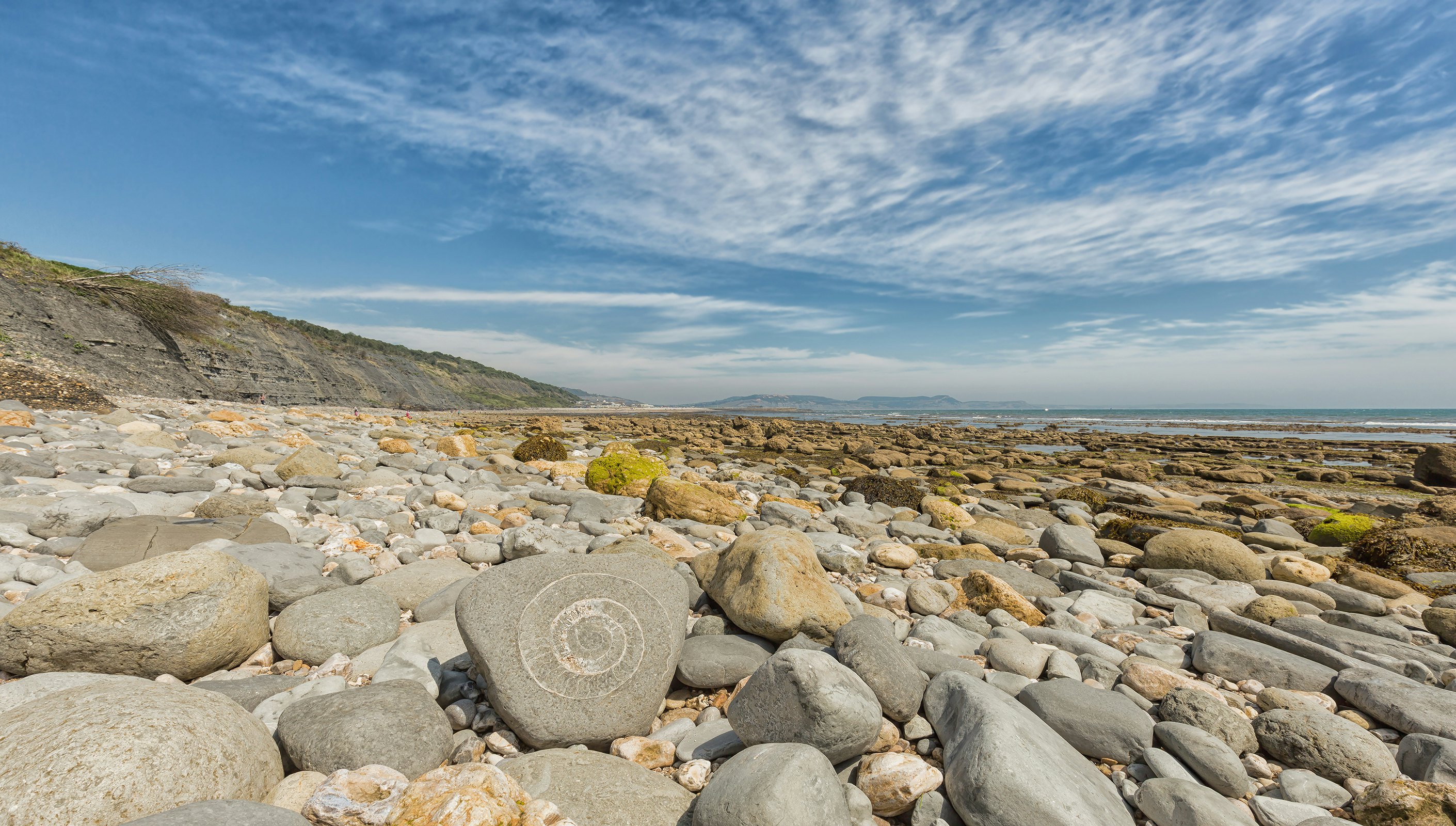
Find a fossil
Fossil hunting in England really took off after Mary Anning and her contemporaries started finding the bones of ichthyosaurs and other marine dinosaurs on Dorset’s Jurassic Coast. Set on the site of Anning’s former home, the Lyme Regis Museum tells her story and exhibits spectacular local fossils; you can find your own on the shore at Lyme Regis Beach and nearby Charmouth.
Other top fossil locales include the Kent and Essex coasts (good for fossil sharks’ teeth), Robin Hood’s Bay and Saltwick near Whitby (good for ammonites) and locations such as Compton Bay on the Isle of Wight, where the bones of real dinosaurs such as Iguanodon can be found.
Party by the beach
Splashing by day and partying by night comes with the territory on the English seaside. Brighton is the epicenter of England’s seaside party scene, with dozens of clubs and bars starting right behind the pebbles, and some of the best LGBTIQ+ nightlife in the country.
Other beach resorts for party people include Bournemouth, whose bars and clubs attract Sandbanks-dwelling football stars, and South Shields near Newcastle-upon-Tyne, which combines the dreamy dunes of Sandhaven with famously friendly Tyneside nightlife.
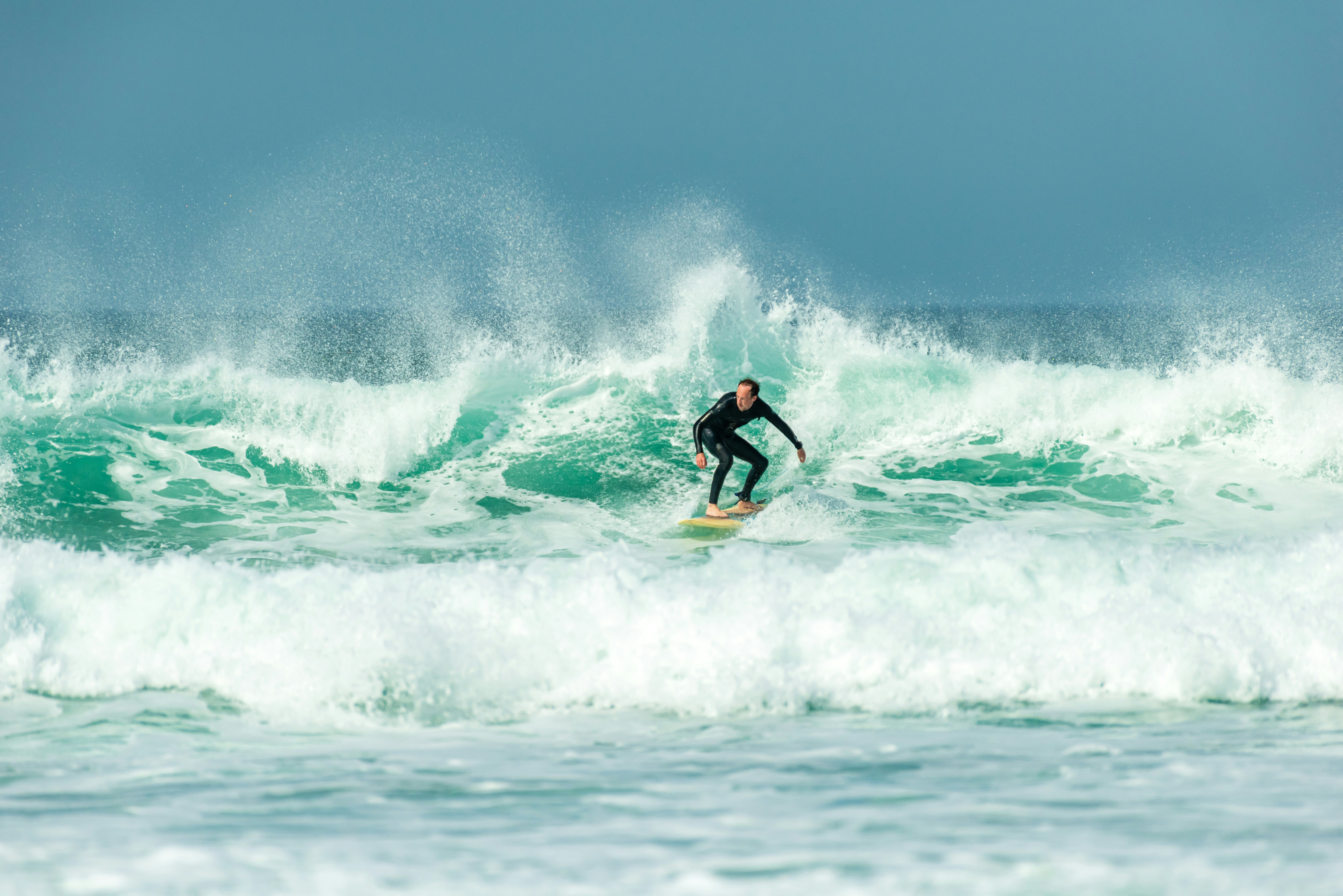
Get active on the water
If you’d rather burn some calories on a seaside trip, Newquay is Cornwall’s surf central. The north coast swells are the most consistent in the UK, and every year they attract thousands of budding boarders looking to catch their first wave or hone their skills.
If you want some lessons, Escape Surf School and Fistral Beach Surf School have good reputations. Fistral Beach is legendary for its waves, which can reach over 10m (33ft) on the famous Cribbar Reef. Other options include Crantock, Holywell Bay and Watergate Bay, home to the respected Wavehunters surf school.
Poole near Bournemouth, meanwhile, is England’s windsurfing playground, particularly around the wafer-thin Sandbanks peninsula, part of a wonderful 10-mile (16km) strip that runs all the way to celebrated Bournemouth Beach, fringed by fine sand and expensive real estate.
Watergate Bay near Newquay and Camber Sands in East Sussex and also popular spots to ride the breeze. Kite-surfers, meanwhile, opt for Cornwall’s gusty Gwithian Beach and Marazion Beach or Hunstanton Beach in Norfolk.

Experience the arty seaside
Artists have been drawn to the English seaside for centuries, but some resorts have a particular creative pedigree. Margate was the favored retreat of painter JMW Turner, and the town enjoyed an arts renaissance in 2011 with the opening of the Turner Contemporary gallery and patronage from Young British Artists such as Tracy Emin and Anthony Gormley, leading to a proliferation of exhibition spaces.
Folkestone has also caught the arts bug, with a dedicated Creative Quarter spilling back from the food-stand-crammed marketplace on its redeveloped seafront. Cornwall’s St Ives is another respected arts haven, with the Tate St Ives showcasing the work of luminaries such as Barbara Hepworth, Terry Frost, Peter Lanyon and Patrick Heron.
Eat locally caught shellfish
Munching local shrimp, cockles, periwinkles, and other shellfish is an integral part of the English seaside experience. It’s a flashback to the days before WWI, when seafood was the food of working people, and portions were sold at penny prices.
One of the best places to indulge your shellfish habit is North Norfolk, starting in Cromer, where dressed crab is freshly prepared at Davies Fish Shop on Garden St. Find more seafood treats along the coast around Brancaster Staithe, from local mussels at the Mussel Pod to epic seafood platters piled with shells, fish and crevettes at the famed White Horse.
Other good crab-munching locations include Wells-next-the-Sea (try the Crab House) and Salcombe in Devon (locals love the Crab Shed). In Whitstable in Kent, visit the historic Whitstable Oyster Company, where you can choose your own oysters, raised in the shell-strewn beds out front. Wash them down with a pint of locally brewed Whitstable Bay pale ale.
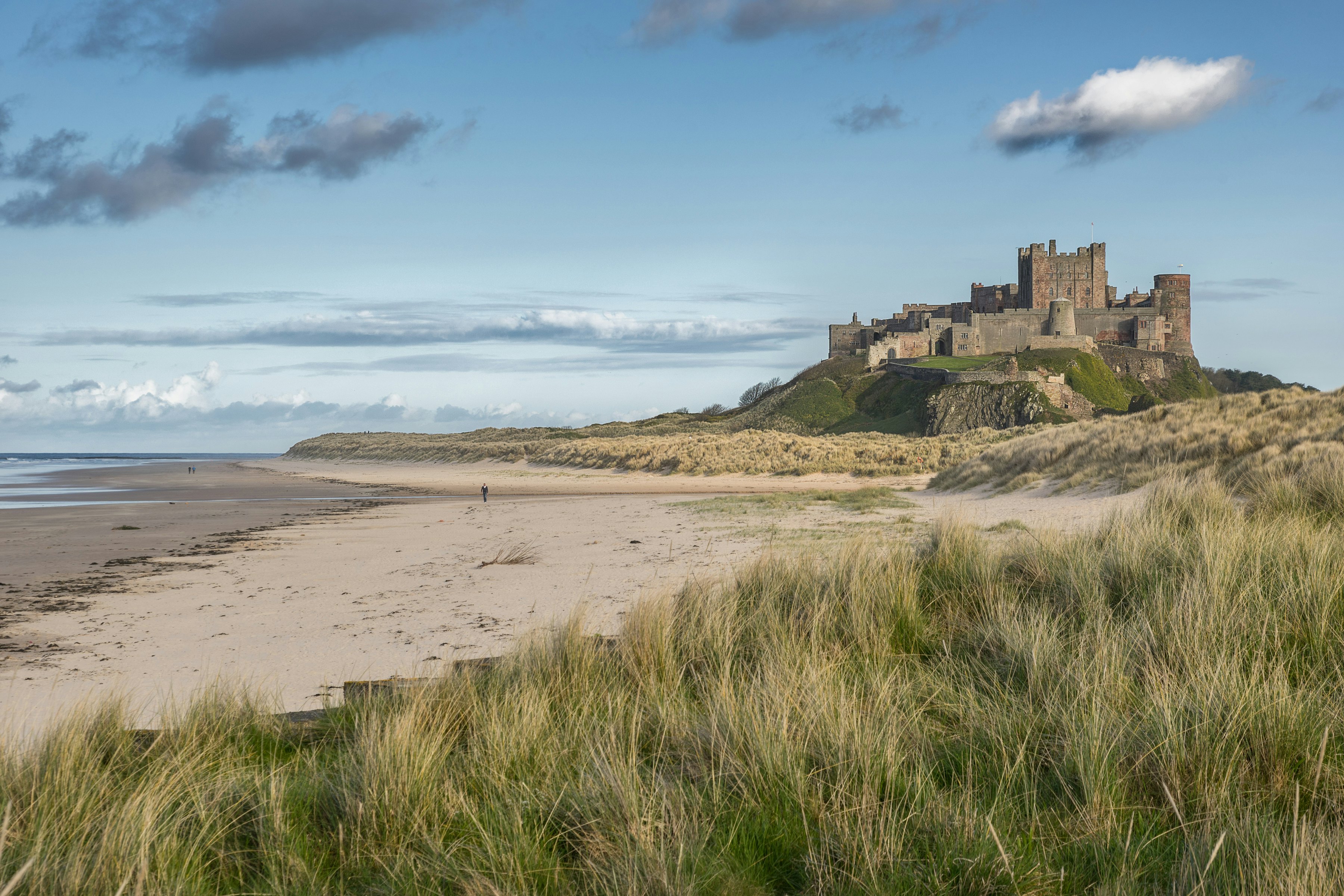
Go for a swim
The English need little coaxing to get into the water, and you'll see people swimming at the seaside from spring to fall, and even on New Year's Day in locations such as Devon's Westward Ho! and Eastbourne Beach. Seek out beaches with a Blue Flag rating, such as Cornwall's Trevone Bay, Durley Chine near Bournemouth and North Bay in Scarborough. Most English seaside resort beaches have lifeguard-patrolled stretches from late May to September.
Discover the crowd-free English seaside
Not every beach comes with a crowd. Stunning Holkham National Nature Reserve in Norfolk offers abundant birdlife, a nearby stately home, and a splendid sweep of dune-backed, seashell-sprinkled sand accessed by hiking across a buffer of salt marshes and pine forest.
Other beaches with wild drama that are perfect for meditative walks include wave-crashed Kynance Cove in Cornwall, wind-tickled West Wittering Beach in East Sussex, Man O’War Beach in Dorset, and Bamburgh Beach in Northumberland, with its lonely castle.
Is the seaside accessible in England?
Most English seaside resorts have made their seafronts and piers accessible to wheelchair users and travelers with disabilities, but getting onto the beach itself can be trickier. Boscombe near Bournemouth, Brighton Beach, Great Yarmouth’s North Beach, and Cornwall’s Bude provide special assistance for disabled beach-goers, such as ramps and all-terrain wheelchairs for hire.
This article was adapted from Lonely Planet’s England guidebook, published in June 2025.














